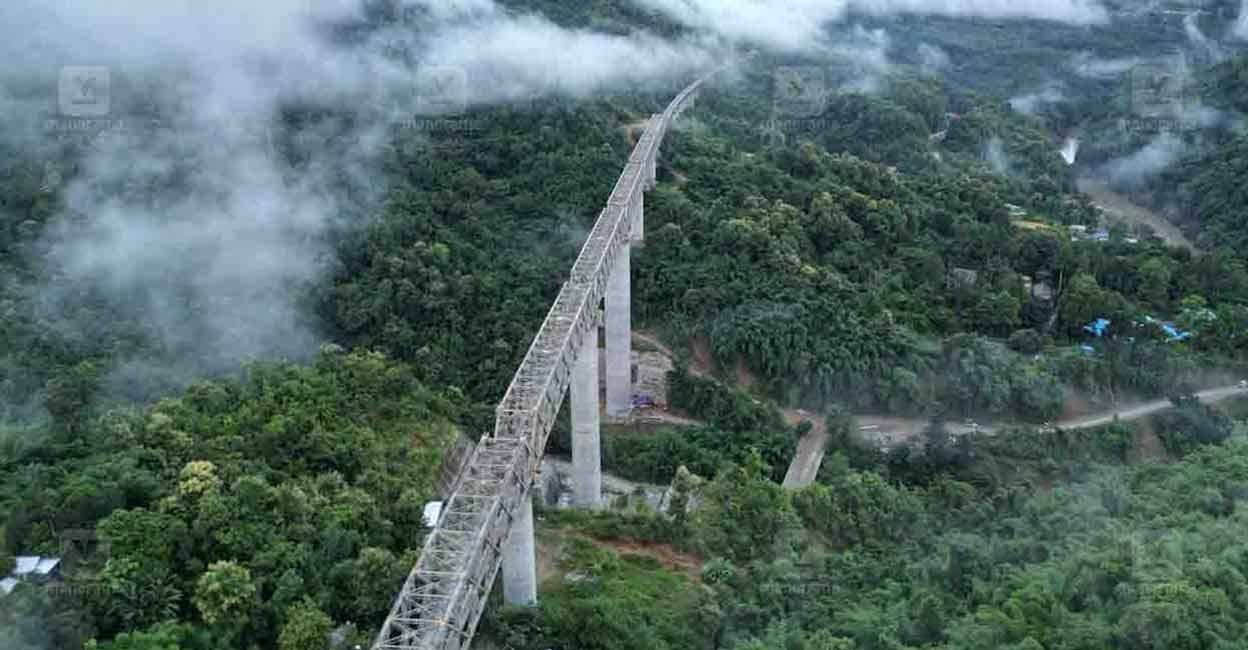Though the distance to Aizawl is just 172 kilometres, narrow and broken mountain roads mean it takes around ten hours by lorry and eight hours by smaller vehicles. Representative image/Robin T Varghese
Travel Guides & Articles
5 Best Places to Travel in India This Monsoon Season – Zee Business

Travel Guides & Articles
Perth Airport to deploy Amadeus biometric passenger system | News

Perth Airport in Western Australia has partnered with Amadeus to deliver an industry-leading biometric passenger system from check-in to boarding – powered by Amadeus’ open platform and seamless travel touchpoints.
The airport is significantly expanding its self-service capacity by introducing close to 100 new check-in kiosks and replacing nearly 40 traditional check-in counters with bag drop units from Amadeus.
All touchpoints are equipped with Amadeus’ biometrics capabilities, delivering a simple, smooth and contactless passenger experience from check-in to boarding.
Travellers, with selected airlines, will be able to check-in and opt for biometrics at self-service kiosks.
Then when dropping bag and boarding the aircraft, passports and boarding passes can remain in the passenger’s pocket. Instead, a brief face scan is all that’s needed to validate the passenger’s identity and retrieve their travel records.
“We know that passengers want their departure experience to be hassle free so by harnessing automation, these upgrades deliver a seamless experience for their journey.
“This provides both our airline partners and travellers with the flexibility they need to ensure a smooth and efficient journey for everyone.
“The passenger experience is paramount and with new automated technologies we can serve more passengers to a higher standard, supporting the growth of our airport,” said Scott Woodward, chief operating officer, Perth Airport.
This latest project builds on the long-term collaboration between Amadeus and Perth Airport, dating back to 2015 when Perth Airport originally installed Amadeus’ cloud-based passenger processing systems.
The two organisations began experimenting with biometrics in 2022 through a series of trials, which have culminated in today’s decision to apply the technology widely across the airport.
“Using platform technology and security measures like tokenisation, airports can create digital representations of a passenger’s data.
“Once that’s achieved, all it takes is a couple of seconds to perform a facial scan to validate the passenger at bag drop or boarding.
“This transformational technology is a game‑changer for the industry, helping airports and airlines to serve many more passengers within the same physical terminal space, while vastly simplifying the check‑in experience.
“Most airports can’t easily add physical capacity, but technology advances mean we can serve more passengers with existing infrastructure,” added Sarah Samuel, senior vice president, AirOps, APAC, Amadeus.
Travel Guides & Articles
Dutch Woman’s Honest India Travel Guide: ‘Taj Mahal Is Quite Difficult To Reach, Riksha Ride Is…’ | Viral News

Last Updated:
The Dutch woman, named Ivana, has shared a candid video on what it’s really like living and traveling in India.
Ivana’s post is an insightful window into life in India. (Photo Credits: Instagram)
Many travel vloggers have shared their impressions of India over the years, but a recent post by a Dutch woman has struck a chord with the internet as she gives viewers a refreshing, real-world glimpse into Indian culture. The content creator is not just travelling India as a tourist but actually living here.
The content creator, named Ivana, shared a detailed post about her life in the country, covering everything she wished she had known before arriving in India, and her insights have struck a chord.
From Indian hospitality and family culture to saree struggles and rickshaw rides, Ivana’s post is a charming and insightful window into life in India.
Ivana’s Viral Post
The content creator starts her post by praising the warmth of Indian hospitality. Referencing cultural saying “Atithi Devo Bhava” (The guest is god), she wrote, “Indians literally have a saying for their unrivalledd hospitality – ‘Atithi Devo Bhava’. It means the guest is god. Prepare to be fed to death!”
Ivana then noted how deeply rooted family values are in Indian life, something she said outsiders can only truly understand by spending time with a local family. “It’s difficult to understand how extremely important family is for Indians unless you’ve spent time within an Indian family. So definitely try to befriend local people and see how they live,” she advised.
Taj Mahal and Ganges River in Rishikesh’s Tips
When talking about India’s most iconic landmark, Ivana offered practical advice for travellers. She stressed, “Plan a trip to Agra for 2/3 days to avoid a lousy Taj experience. Be there at 6AM for a foreigner ticket, but keep in mind the Taj is closed on Fridays for prayer.”
Speaking about the Ganga River in Rishikesh, Ivana described it as “a minty green colour, almost surreal.” She also warned visitors to dress modestly and stay cautious about strong currents and icy temperatures.
Ivana’s Saree Experience
The content creator didn’t hold back sharing about her first experience with a saree, admitting it was tricky to put on. “It’s very difficult to put on if you’ve never worn one, but once it’s on, it’s super comfortable. Ask for help from an aunty or at a salon,” she stated.
India Is Not Overcrowded..
Countering a common myth, she noted that India has “plenty of space” and even “slow” times if you know where (and when) to go. “For the tourist places, try to visit way before 10AM (like 8AM! ), or you can go to more rural areas to escape all crowds. Be mindful of which places you visit without a guide, though! Some places are even off limits for Indians,” she explained.
India’s Social Etiquette
Ivana gave a light-hearted breakdown of Indian social etiquette, especially when it comes to greetings and personal space. She noted, “Indians are very easy with personal space, but hugs do have a bit of an instruction. With women it’s fine, but with elderly ladies (and men!) you’d usually touch their feet to pay respect and for a blessing. With men, just give a Namaste, OR if it’s a close friend, you hug from the side.”
India’s Diversity, Rickshaws And Daily Adventures
Ending on a joyful note, she called Punjabis the “party animals” of India. She also talked about the unique culture and language of each Indian state and her love for rickshaw rides. “Each Indian state has such a distinct culture, and most have their own language! And riding a rickshaw never gets boring. Even after a million times, it’s as fun and adventurous as the first time,” she penned.
Social media users loved the video, with some expressing that they are moving to India soon and have saved all her helpful tips.
A team of writers at News18.com bring you stories on what’s creating the buzz on the Internet while exploring science, cricket, tech, gender, Bollywood, and culture.
A team of writers at News18.com bring you stories on what’s creating the buzz on the Internet while exploring science, cricket, tech, gender, Bollywood, and culture.
Click here to add News18 as your preferred news source on Google, News18’s viral page features trending stories, videos, and memes, covering quirky incidents, social media buzz from india and around the world, Also Download the News18 App to stay updated!
Delhi, India, India
September 11, 2025, 16:25 IST
Read More
Travel Guides & Articles
Indian Railways connects Mizoram to the heart of India | Travel

The Indian Railways, often called the nation’s heartbeat, is now bringing Mizoram, the small northeastern state, closer to the rest of the country. This has been made possible through the 52 km Bairabi-Sairang railway line, a project that took 11 years to complete. Soon, trains will be able to run to and from Aizawl, the capital of Mizoram, connecting it with destinations across India.
The new line connects Sairang Railway Station, situated approximately 22 km from Aizawl, with Bairabi on the Assam-Mizoram border. Prime Minister Narendra Modi is expected to inaugurate the project and dedicate it to the nation in the near future. What makes this development remarkable is that rail connectivity is reaching the capital of Mizoram 78 years after India’s independence. The route begins in Silchar, Assam and winds its way through Bairabi to Sairang. For Mizoram, this is the most significant infrastructure milestone since the inauguration of Lengpui Airport in 1998.
Acting` Northeast’
The central government is investing heavily in the comprehensive development of India’s northeastern states, with rail connectivity at the heart of this vision. So far, railway lines have successfully reached the capitals of four states, namely Assam, Tripura, Arunachal Pradesh, and Mizoram. In the remaining northeastern states, except Sikkim, rail presence is limited to just one or two stations near their borders. The goal is ambitious but clear: extend railway lines to the capitals of Manipur, Meghalaya, Nagaland and Sikkim by 2030.
At the centre of this effort lies the Siliguri Corridor, popularly known as the `Chicken’s Neck,’ which connects the northeast to the rest of India through West Bengal. Strategically, this narrow stretch of land is crucial, lying between Nepal, Bangladesh and Bhutan. It has also been a sensitive region, having witnessed Chinese incursions in the past. Strengthening rail connectivity across the northeast, therefore, carries not just developmental benefits but also critical strategic and defence value.
For Mizoram, the stakes are particularly high. The state shares international borders with Myanmar and Bangladesh, while plans are already under discussion to extend its newly built railway line right up to the Myanmar border. This would boost trade and connectivity while reinforcing national security.
Currently, the route from Guwahati to Silchar terminates at Bairabi station on the Assam–Mizoram border. From there, a 52 km line has now been laid deeper into Mizoram, which serves as one of the most significant infrastructure milestones for the state in decades.
The new railway line stands as a testament to the engineering brilliance of the Indian Railways. Photo: Robin T Varghese
Everyday life in Mizoram
In Mizoram, everyday living comes with its own set of challenges. Almost everything has to be brought in from outside, and trucks remain the state’s primary means of transporting cargo. Alongside these, the markets brim with winter vegetables like cabbage and cauliflower, fresh bamboo shoots, betel leaves and other local produce.
Aizawl wakes up early. By 5 am, the town is already buzzing with life. Women make their way to markets such as Bara Bazaar even before dawn, their baskets filled with stalks of bamboo shoots, fresh greens, dried river fish, live crabs, betel leaves, areca nuts and handwoven textiles. The path to Bara Bazaar is steep and uneven, where walking down is easy, but climbing back up tests your breath and strength.
I paused to rest, only to be humbled by the sight of a vendor striding up the hill with a heavy bundle balanced on his shoulder. Locals often say that with the right training, one can even lift an elephant. Here, bundles are not just of goods. Children, too, are carried snugly in cloth slings on their mothers’ backs.
Prices in the markets reflect the costs of transport. Only items grown locally, such as cabbage and ginger, are cheaper, while everything else carries a steep markup. A truck journey from Silchar in Assam, the nearest hub, takes almost ten hours to cover just 172 kilometres. Reaching Guwahati is an even bigger ordeal, which takes an entire day on broken, winding mountain roads.
Lengpui Airport, only 32 kilometres from Aizawl, offers quicker travel, but high airfares keep most people grounded. It’s little wonder, then, that residents eagerly await the railway line, which promises affordability and speed.
Each morning, vehicles wait by the roadside to take passengers arriving from Guwahati onwards to Aizawl and into remote villages. Everything travels on these rugged carriers, from chickens to gas cylinders and chairs to bundles of goods. Materials are stacked alongside the passengers like a moving avalanche of life heading into the hills.
Drivers know these routes better than anyone. One tells me that Guwahati in Assam is the gateway to the rest of the country. A single passenger must pay around Rs 1700 for a ride in a Tata Sumo MUV to Guwahati, a journey of 500 kilometres. Departing at 7 pm, you reach only by early afternoon the next day, after braving steep hills, hairpin bends and endless ghats.
The railway promises to change all that. Once trains begin running, travellers will reach Guwahati in nearly half the time. With this, the Indian Railways will not just connect Mizoram to the rest of India. Still, they will open doors to cultural exchange, education, healthcare and opportunities the people here have long dreamed of.
Engineering excellence in the hills
In Mizoram, where roads snake through mountains, disappear into tunnels and leap across valleys on soaring bridges, the new railway line stands as a testament to the engineering brilliance of the Indian Railways. Compared with this feat, long-awaited projects like the Nilambur-Nanjangud line and the Angamaly-Erumeli-Sabarimala line in Kerala seem modest.
Every station on the Mizoram line has been designed with care. Platforms are placed strategically to guard against landslides, while flat surfaces have been painstakingly carved out of the rugged hills to make space for tracks. The electrification of the route has already begun, proving once again that with vision and persistence, even the steepest challenges can be conquered.
The state government, too, acknowledges the importance of sustainable transport. Railways, with their large passenger capacity and minimal environmental impact, are an ideal solution for Mizoram’s hilly terrain. Voices are already rising, demanding that the line should not stop at Sairang but push further into the state’s interiors.
The central government is investing heavily in the comprehensive development of India’s northeastern states, with rail connectivity at the heart of this vision. Photo: Robin T Varghese
Lower costs, greater benefits
The impact of freight services is expected to be immediate. “With the start of freight train operations, the cost of rice and fuel will come down. Lower transportation costs will reduce prices overall,” explained Neelanjan Deb, PRO of the Northeast Frontier Railway.
Currently, essentials are transported by road from Silchar in Assam. Though the distance to Aizawl is just 172 kilometres, narrow and broken mountain roads mean it takes around ten hours by lorry and eight hours by smaller vehicles. Once trains start running, the journey is expected to take only three and a half to four hours.
Key features of the Bairabi–Sairang line
Stations: Harthak, Kawuphai, Mulkang, Sairang
Tunnels: 48
Major bridges: 55
Minor bridges: 87
Railway overbridges: 5
Railway underpasses: 6
Total length of tunnels: 13 km
Longest tunnel: 2 km
Project cost: Rs 8701 crore
The project demanded much more than just the construction of railway tracks. Nearly 200 kilometres of approach roads were carved out, with additional routes built to link the new stations, namely Harthak, Kawuphai, Mulkang, and Sairang, to nearby villages.
Dreams turn into reality
For locals, the railway’s arrival is nothing short of a dream fulfilled. Gabriel, a soldier, and his wife, Mayeni, recall the announcement of the project in 2008. By 2014, the line had touched the Mizoram border, but neither imagined that a railway would one day weave its way across the state’s mountains and valleys.
Indeed, the line is a marvel of persistence. It crosses from one mountain to another through an endless sequence of bridges and tunnels. 48 tunnels in all, adding up to 13 kilometres, along with 55 major bridges and 87 minor ones.
The crown jewel of the project is Bridge No. 144, a spectacular curved structure that rises 114 meters above ground level, taller than the Qutub Minar by 42 meters. Trains from Sairang station enter the valley through this bridge, making it the second-highest railway bridge in India. The tunnel portals are another unique feature, adorned with motifs inspired by Mizo culture.
The longest tunnel stretches for two kilometres, burrowing deep through solid rock to carry the line forward. Together, these feats underscore the technical achievement as well as the imagination that have made the railway dream in Mizoram a reality.
Promise on the rails
Mizoram is a land waiting to be explored. Its rolling blue valleys, cascading waterfalls and tribal culture hold immense promise for tourism. But the state still struggles with the basics such as good hotels, roads and supporting infrastructure. For now, homestays remain the most common choice of accommodation. From afar, Aizawl looks like a matchbox town, with houses clinging tightly to steep hillsides and narrow lanes weaving through.
Women are the driving force of the local economy. They dominate the shops and workplaces, often working harder than men. Bamboo craft, bamboo-based food products and handwoven textiles are among the state’s signature offerings, while ginger cultivation thrives in the interior villages.
For many Mizos, the railway is a first-time experience. Those who have seen the outside world welcome it with open arms, while others prefer to reserve judgment until they try it themselves. When trial runs began in June, excitement filled the air. On the first day, locals rushed into the train coaches, reluctant to step out. Since then, during subsequent trials, trains have been halted a little away from platforms to avoid such scenes. Media crews from across the region have been allowed onboard, while crowds continue to gather in large numbers each time a train whistles past.
On the tracks of change
For students, patients travelling for medical treatment and tourists alike, the railway is a lifeline. The Food Corporation of India and Indian Oil Corporation are preparing to open depots in Aizawl, reducing dependence on trucks. Today, whenever roads are blocked, Aizawl is cut off completely. But not anymore. With trains rolling in, the city will no longer face such isolation.
Officials expect more visitors, boosting the earnings of small traders and operators of taxis and bike taxis. Plans are already in place for a special tourist train to run in collaboration with the state government.
For locals like Jothan Lorra, a retired government official, the dream goes further. He hopes to see a Rajdhani Express to Delhi begin soon. At present, travelling to Mumbai or Delhi means first going to Guwahati or Silchar. With air travel expensive, affordable train journeys will be a blessing. Jothan, like many others, is eagerly waiting for the day when trains from Aizawl run to Delhi, Kolkata and Chennai.
Freight services will also bring big relief. The construction sector, in particular, will benefit as materials and products can be transported more easily to and from Mizoram.
Silent city
Aizawl is fondly called the Silent City as vehicles rarely honk here, while traffic signals are few and far between. The days are warm, but evenings quickly turn cool. Locals converse in Mizo and English. Shops close by 6.30 pm, and on Sundays, the entire city rests. Mist and sudden showers often blur the hilltop views, while forests cover nearly 85 per cent of the region.
The city’s attractions are as charming as they are diverse, including the Solomon’s Temple, the Durtlang Hills, the Aizawl Peak Sky Walk, the Mizoram State Museum, the Zoological Park, and Tamdil Lake. Clean and orderly, Aizawl is home to fewer than 13 lakh people. The best time to visit is between November and March, when the weather is cool and pleasant. In October, temperatures can dip to 11 degrees Celsius. Lengpui Airport, located just 32 km away, directly connects the city with Guwahati, Kolkata, and Delhi.
With the railway opening up, travellers from Kerala who reach Silchar on the Thiruvananthapuram-Silchar train will be able to continue onwards to Sairang by rail. Tourists, however, require an Inner Line Permit (ILP) to enter Mizoram. For those arriving by air, a 15-day pass can be obtained at the airport for a prescribed fee. Applications are also accepted online via this website.
-

 Business2 weeks ago
Business2 weeks agoThe Guardian view on Trump and the Fed: independence is no substitute for accountability | Editorial
-
Tools & Platforms1 month ago
Building Trust in Military AI Starts with Opening the Black Box – War on the Rocks
-

 Ethics & Policy2 months ago
Ethics & Policy2 months agoSDAIA Supports Saudi Arabia’s Leadership in Shaping Global AI Ethics, Policy, and Research – وكالة الأنباء السعودية
-

 Events & Conferences4 months ago
Events & Conferences4 months agoJourney to 1000 models: Scaling Instagram’s recommendation system
-

 Jobs & Careers2 months ago
Jobs & Careers2 months agoMumbai-based Perplexity Alternative Has 60k+ Users Without Funding
-

 Podcasts & Talks2 months ago
Podcasts & Talks2 months agoHappy 4th of July! 🎆 Made with Veo 3 in Gemini
-

 Education2 months ago
Education2 months agoMacron says UK and France have duty to tackle illegal migration ‘with humanity, solidarity and firmness’ – UK politics live | Politics
-

 Education2 months ago
Education2 months agoVEX Robotics launches AI-powered classroom robotics system
-

 Funding & Business2 months ago
Funding & Business2 months agoKayak and Expedia race to build AI travel agents that turn social posts into itineraries
-

 Podcasts & Talks2 months ago
Podcasts & Talks2 months agoOpenAI 🤝 @teamganassi





















